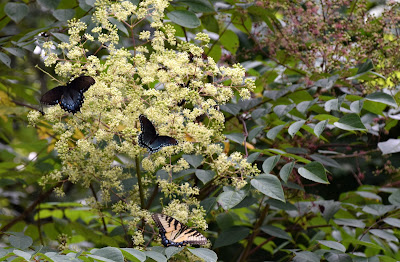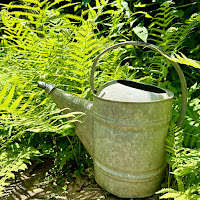 |
| Hophornbeam (Ostrya virginiana) |
I already have some ideas about what to add to this woodland property, but I'm careful not to move too fast before I properly understand what I have and what is possible.
Now that I am the one with a new space, I’m trying hard to follow the advice that I give to others in this situation. Here are the guidelines I’m trying to follow:
- Remove fruiting invasive plants as quickly as you can. For me, that means weed-whacking and pulling out all the stiltgrass (Microstegium vimineum) before it has a chance to flower and set seed. Since the property slopes to a creek, I am starting upslope first and working my way down towards the creek (although I first whacked one good path to the creek so I could explore more).
- Take an inventory of what you have. I find that pulling the weeds by hand helps me slow down and be more observant and I do that a lot. I also use my battery-powered weed whacker to tackle large areas of stiltgrass in particular.
- Determine your sun and moisture levels, particularly identifying extremes like standing wet areas, excessively dry areas, deep shade, and harsh afternoon sun spaces. Observe the light from morning to night and know that it may change a little from summer to winter because the length of the day changes.
- Identify your pest conditions. For example we have deer here and I’m carefully testing out some pots of perennials to see how much deer pressure we might have so that I can avoid planting too much deer candy (or at least make efforts to protect them).
- Take time to get to know your new space. We arrived here in August so some things may be dormant. I do know from visiting it in early July that we have a whole lot of wild comfrey (Andersonglossum virginianum) and now some of the dried stalks are still visible.
 |
| The edge of the driveway shows how much I have cleared plus the faint path to the creek |
 |
| Small red-bellied snake |










